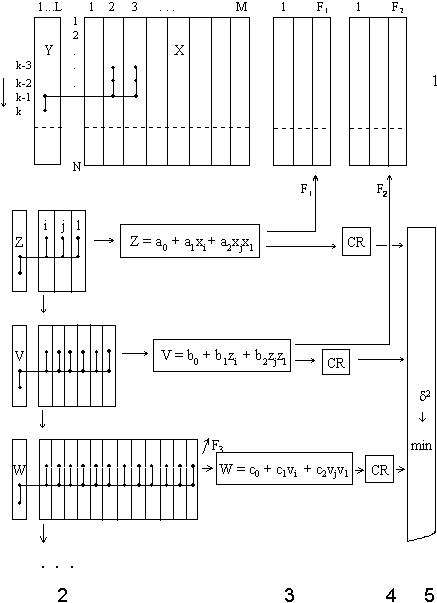|
As with the Combinatorial algorithm, the output variable must be specified in advance by the person in charge of modeling, which corresponds to the use of so-called explicit templates [16,25]. In each layer, the F best models are used to successively extend the input data sample. In Multilayered Iterative (MIA) recurrent algorithm the iteration rule remains unchanged from one layer to next. As it shown the first layer tests the models, that can be derived from the information contained in any two columns of the sample. The second layer uses information from four columns; the third, from any eight columns, etc. The exhaustive-search termination rule is the same as for the Combinatorial algorithm: in each layer the optimal models are selected by the minimum of external criterion. 
Output model: Yk+1 = d0 + d1x1k + d2 x2k+ ... +dm xM k xM-1 k
where: MIA should be used when it is needed to handle a big number of variables (up to 500). This algorithm also can be modified in such way that at each layer a set of F best variables is selected and at next layer only this variables are used. MIA may contain in some cases the "multilayerness error" when effective variable are not selected which is analogical to statistical error of control systems. Multilayered GMDH algorithms can be used for solving of incorrect and ill-defined modeling problems, i.e. in the cases when number of observations is less than variables N < M. The regression analysis methods are inapplicable in this case, because they give not possibility to build the only model, which is adequate to process in this case. Originally GMDH was proposed as addition to regression analysis
of two procedures: Recent time two additional procedures are added: |

